Companies are investing heavily to unlock the potential of generative AI. At the same time, they are not turning away from other forms of AI, such as Machine Learning and Deep Learning. Across the spectrum, there is no shortage of high-value use cases. Here’s the proof.

“The AI revolution began 20 years ago. For two decades, pioneering companies have been developing AI algorithms and deploying them at the core of their processes,” says Mick Levy, Director of Strategy & Innovation at Orange Business.
Generative AI is more recent. It is important to remember that value comes from all forms of artificial intelligence. In practice, we can distinguish three main types of AI. Here are a few concrete examples of projects delivered by Orange Business teams for their clients.
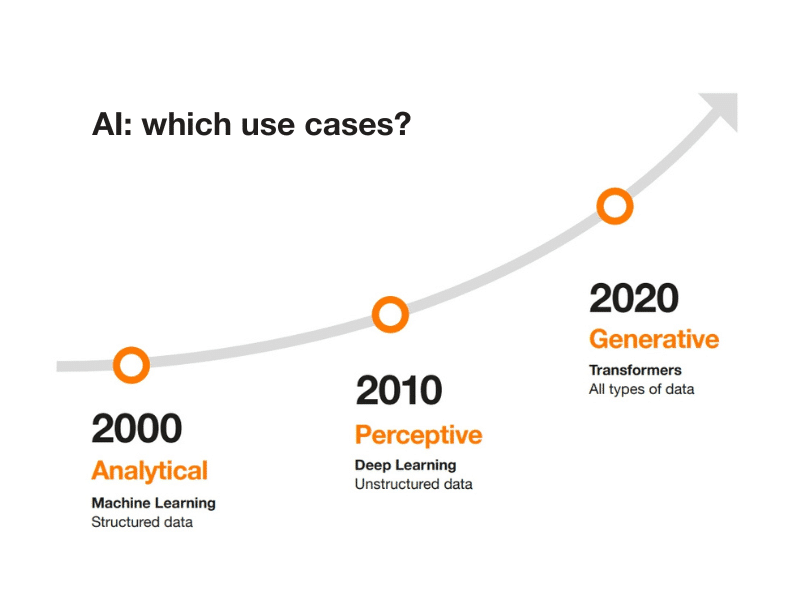
The proven benefits of Machine Learning and Deep Learning
For an industrial client, Orange Business leveraged real-time IoT sensor data to predict failures of a key piece of equipment. The project enabled the company to save several million euros and achieve a return on investment within the first year.
Product categorization, especially in e-commerce, is another key use case for AI. In this sector, accurate categorization is essential to driving revenue growth.
A major e-commerce player benefits greatly from its marketplace, which indexes hundreds of thousands of products. However, it also observed that sellers do not always provide accurate product categories. As Aurélie Gonçalves, Strategy & Innovation Manager at Orange Business, points out: “A miscategorized product can mean 20 to 30% fewer sales.”
By implementing a dedicated Deep Learning algorithm, the company was able to correctly categorize 85% of its catalog. The AI solution draws on all available product sheet information to determine the most relevant category.
The different fields of AI complement each other
This project went through several stages of development and illustrates how the different fields of AI complement one another. The Deep Learning approach was enhanced with generative AI, which helped categorize the remaining 15% of the catalog. In the end, the e-commerce company used the outputs of generative AI to retrain its Deep Learning model and boost its native performance.
Building on this success, and by combining AI approaches, the marketplace is now working on a new version designed to provide merchants with tools to optimize every element of their product pages.
“The AI revolution began 20 years ago. For two decades, pioneering companies have been developing AI algorithms and deploying them at the core of their processes,”
Mick Levy, Director of Strategy & Innovation at Orange Business.
AI: matching each use case with the right model
Revenue forecasting
Predictive AI also creates value, whether combined with other models or used on its own. One example is sales forecasting for a large retail network across multiple stores. Once the forecasts are reliable, they can inform decisions across the entire value chain, from procurement to manufacturing and supply chain management. Through such projects, Orange Business has helped a retailer double the revenue of its flagship store while optimizing its value chain end to end, delivering a return on investment within just a few months.
Building a recommendation engine with predictive AI
In banking, predictive AI can power recommendation engines that provide call center agents with real-time suggestions directly on their screen. These tailored offers significantly improve customer interactions. In one case, the bank’s contact center increased cross-sales by 35% thanks to this solution.
Towards responsible digital: AI for energy efficiency
While AI is often criticized for its environmental impact, it can also serve as a lever for sustainable digital practices. At Orange, an algorithm categorizes mobile antennas based on their consumption patterns. The analysis highlights anomalies and triggers targeted actions such as replacement, reconfiguration or maintenance. This use case already reduced energy consumption by 5% with its first version, and researchers estimate savings could reach up to 15% with further improvements. A simple yet highly effective application.
The rise of perceptive AI
A second wave of AI has followed predictive approaches. Over the past decade, companies have gained access to perceptive AI systems, also based on Deep Learning, including computer vision for recognition tasks. In the pharmaceutical sector, for example, cameras deployed along production lines now automate quality control and speed up vaccine production.
Generative AI opens up new possibilities
The third and most recent wave of AI is generative AI, which unlocks entirely new types of use cases. One bank, for instance, is leveraging this technology to translate its legacy applications written in Cobol into a more modern and maintainable language. This strategic project, long envisioned by the bank’s IT department, has only recently become feasible thanks to generative AI. Even Google relies on generative AI for software development: Sundar Pichai, CEO of the tech giant, has announced that 25% of Google’s new code is now generated by AI.
The potential of LLMs to expand enterprise AI use cases
From chatbots and callbots to content generation for marketing, the potential of Large Language Models (LLMs) significantly broadens the portfolio of AI use cases available to companies. And this applies across all industries, as highlighted in the energy sector by Didier Gaultier, Head of AI at Orange Business.
The work of an energy provider responsible for maintaining client installations is by nature highly technical. Field technicians are equipped with tablets to access technical knowledge bases and to draft intervention reports. Yet these features often fall short of user expectations.
Accessing the knowledge base is complex for technicians, and the reports they produce are frequently of limited quality. To simplify access to information, Orange Business has deployed a generative AI solution. It engages in dialogue with the technician to identify the best solution for each issue encountered. It also generates a “clear and intelligible” summary of the operations carried out, producing a standardized report that fully meets the company’s quality requirements.
Predictive, perceptive, generative: AI in business takes many forms, often complementary and increasingly combined. Year after year, the toolbox available to AI application designers continues to expand.
How BPCE, Pierre Fabre and the Île-de-France Region are embracing AI
Organizations today can leverage different AI technologies to address pain points in their business and customer journeys, in line with their strategy and priorities. As a major player in the European banking sector, Banque Populaire – Caisse d’Epargne (BPCE) already has a certain level of maturity in deploying AI.
This maturity is largely due to BPCE’s rich data assets and its experience with Big Data. As Luc Barnaud, Group Chief Data & AI Officer, explains, the bank processes 11 billion transactions per year. Its websites and mobile applications record nearly 3 billion visits annually, and the group also manages millions of documents. This translates into many operations to automate and vast volumes of data to exploit.
“We quickly turned to predictive AI to unlock the best data and take it out of the fridge,” says the CDO. BPCE applies AI algorithms to its data to increase operational efficiency, whether by processing documents, verifying information, or extracting it to feed into its systems.
AI use cases: from risk management to customer relations
In risk management, AI helps the banking group assign a score to each transaction. This step determines whether an operation can be executed immediately or flagged for review, notably to detect potential fraud.
Customer relations represent another key area of AI development. The goal here is to leverage customer knowledge to personalize communications and offers. BPCE has shifted its approach from being product-centric to becoming more customer-focused.
By detecting customer events, the bank improved its conversion rate, generating over 10 million new opportunities in 2024. Subscription and cross-selling rates also saw significant growth.
AI across all business verticals at Pierre Fabre
At Pierre Fabre Group, the potential of data extends across every business vertical, explains Clara Thibault, Chief AI, Data & Analytics Officer of the Life Sciences group. In 2024, the laboratories focused on use cases designed to create tangible value for the company.
“Prediction is at the heart of this strategy. The second pillar is the deployment of generative AI for employees.” Since its launch more than six months ago, Playground GPT, the company’s “private ChatGPT,” has been rapidly adopted by 50% of employees, surpassing 100,000 conversations.
Like Pierre Fabre, many organizations have equipped their teams with generative AI tools to support daily work. Examples include MaIA at BPCE and GénIAI at the Île-de-France Region, the third organization sharing its AI experience during the 2024 Data & AI Morning. What they all share is the ambition to provide new tools that improve productivity and introduce new ways of working.
On the predictive side, Pierre Fabre aims to scale up its use cases. During the Paris 2024 Olympic and Paralympic Games, its sales division relied on predictive AI to ensure pharmacies were optimally stocked based on attendance forecasts and to deliver targeted in-store promotions.
In its production activities, Pierre Fabre combines predictive AI with machine sensors to prevent equipment failures and production stoppages. Since each downtime incident can generate costs of several hundred thousand euros, every avoided breakdown represents a major success.
The public sector is also eligible for AI
Private companies such as BPCE and Pierre Fabre are at the forefront of AI adoption. But while the public sector is often seen as lagging behind in technology, the Île-de-France Region offers a different perspective.
Its journey with AI only began recently, in 2022, acknowledges Antoine Carette, the region’s Chief Data Officer. This initial push came mainly with the arrival of consumer-grade generative AI. Since then, the region has seized the opportunity to design secure, business-relevant use cases, including support for innovation and economic development.
The sovereignty challenge
The Île-de-France Region also places strong emphasis on the issue of sovereignty. This is why all its AI applications are developed on Cloud Avenue, the Orange Business cloud offering. With infrastructure natively designed for AI and generative AI engines developed in France, this solution fully supports the region’s ambitions while providing a demanding framework of security and trust.
“Our first use case was about transforming the relationship with citizens. Generative AI allows us to completely rethink this relationship. We are no longer just a catalogue of public services,” explains Antoine Carette. The technology enables the region to translate an entrepreneur’s project, expressed in their own words, into the required administrative formats and documents.
The region also maintains a backlog of around one hundred use cases, including a “Tech Assistant”: a conversational bot designed to support civil servants with simplified access to IT knowledge bases.
To scale up generative AI adoption, the Île-de-France Region has also deployed GénIAl, an internally developed, sovereign solution now entering its industrialization phase.
At the same time, the region is testing market solutions such as Microsoft Copilot, currently trialed with 15% of its workforce. A first assessment is expected in 2025 before any decision on broader deployment. Pierre Fabre is following a similar path, with 300 beta testers already using Copilot and an evaluation underway ahead of a potential rollout later this year.
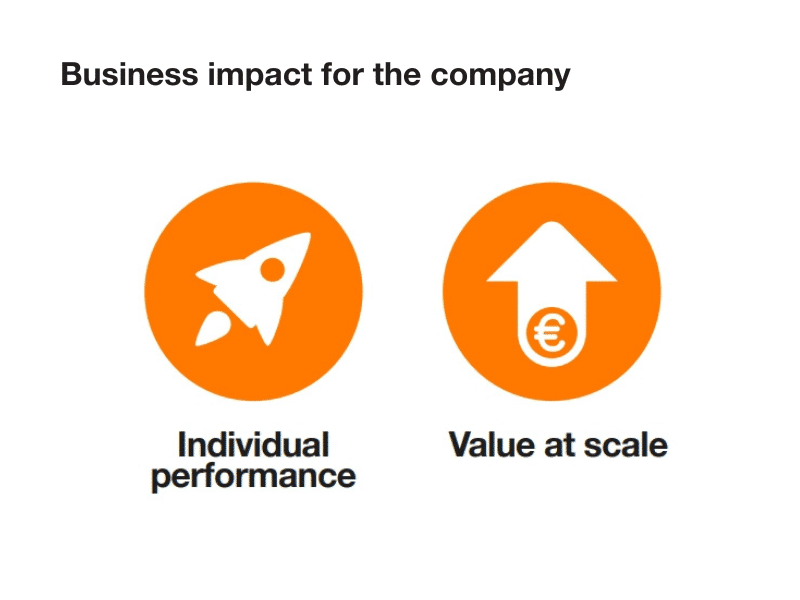
In conclusion, Mick Levy highlights the importance of balancing two trajectories: improving individual performance through everyday AI assistants, and “pursuing high-impact use cases with strong potential for transformation and value at scale.”


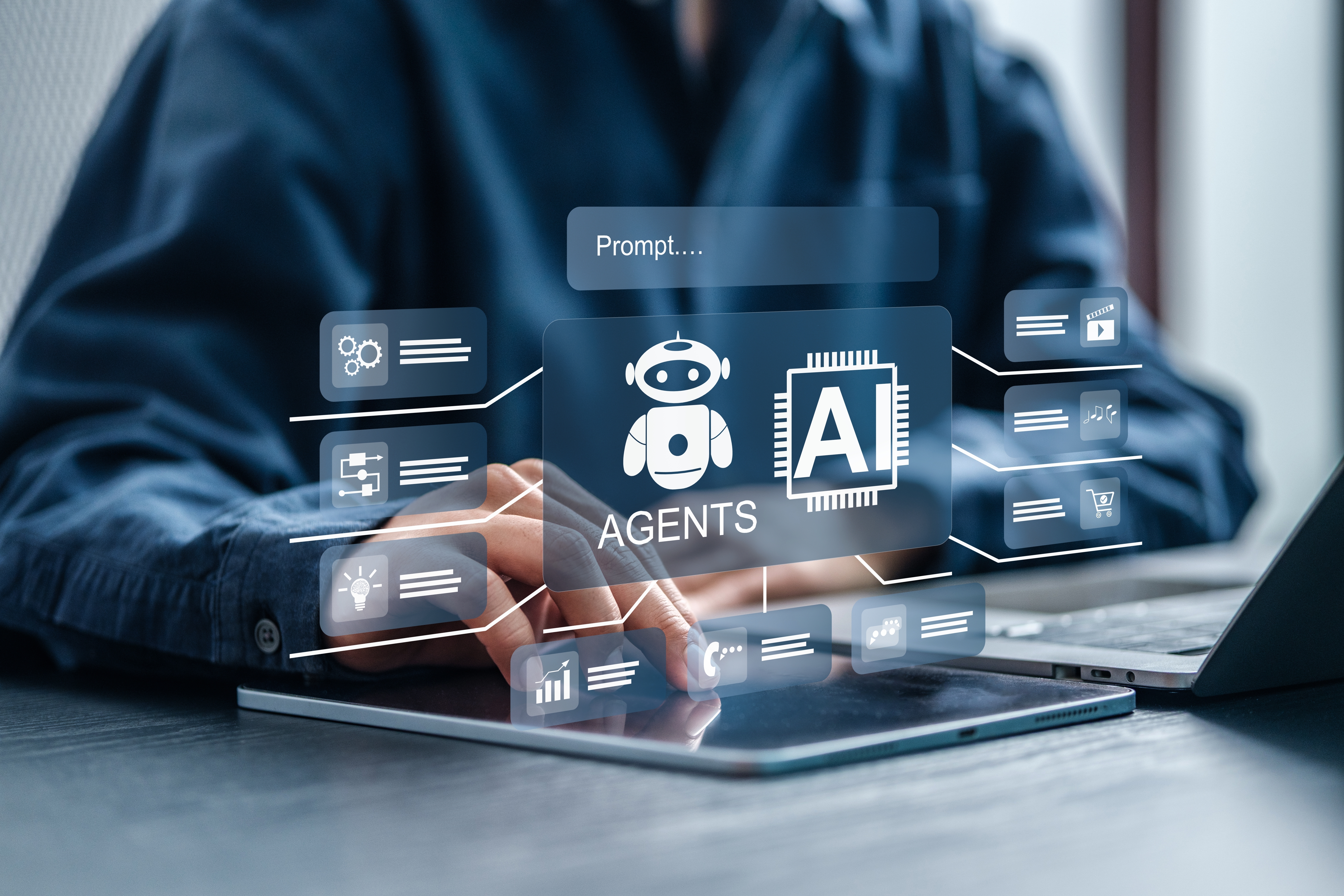




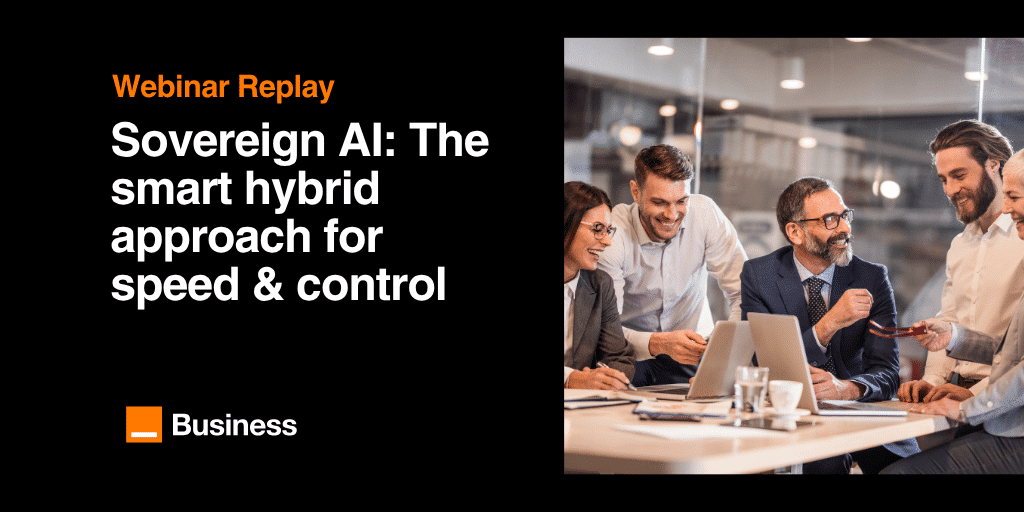
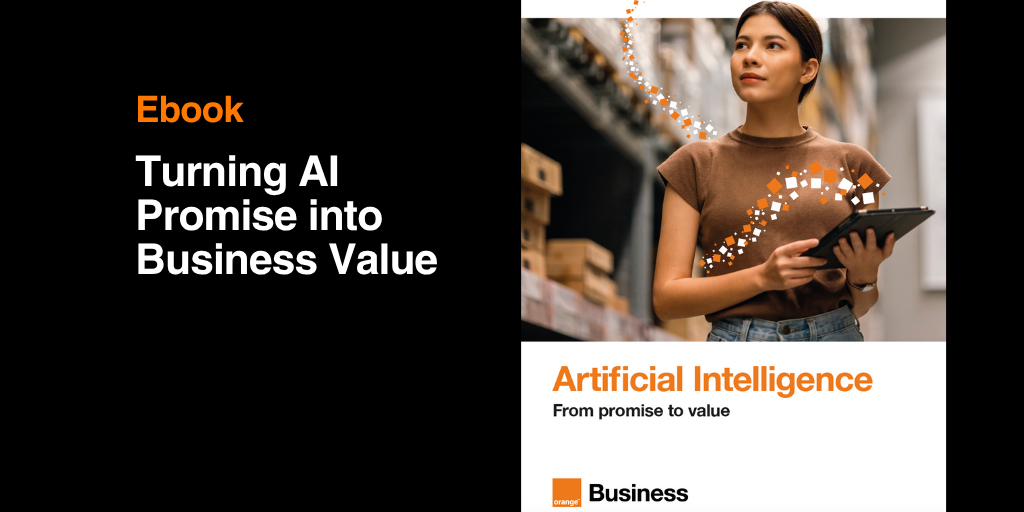
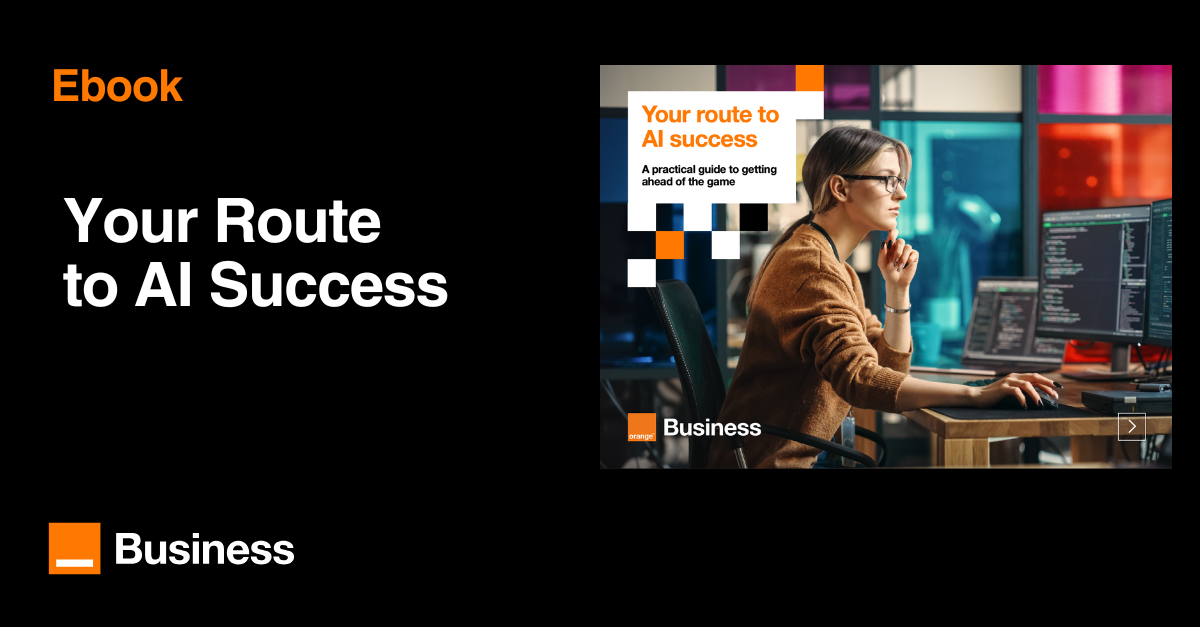





Comments (0)
Your email address is only used by Business & Decision, the controller, to process your request and to send any Business & Decision communication related to your request only. Learn more about managing your data and your rights.